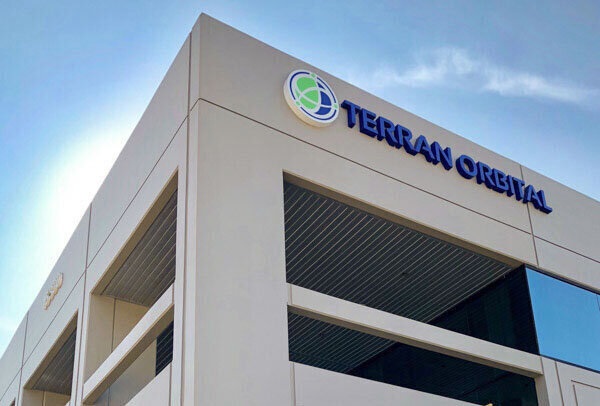Terran Orbital Begins Trading on the NYSE and Jumps Nearly 8%
Terran Orbital made its debut on the NYSE on Monday with $200 million in outstanding spacecraft orders.
The spacecraft manufacturer Terran Orbital began trading on the New York Stock Exchange on after closing its SPAC merger and trades under the ticker LLAP.
LLAP is a reference to the Star Trek saying “live long and prosper.”
Shares were previously listed under the special purpose acquisition company Tailwind Two Acquisition Corp.
The company has contracts to build satellites for customers including NASA and the Pentagon, with its revenue backlog growing from $68 million last year to more than $200 million currently.
The stock rose as much as 15% at the open, before falling as much as 19%, and then changing direction again to finish the day up 7.6% at $11.80 a share.
Terran is the newest company to go public through SPAC deals. Others include Virgin Galactic, Astra, Rocket Lab, Planet and more.
The company’s co-founder and CEO Marc Bell told CNBC that he believes his company’s foundation sets it apart from others however.
“We look at a lot of these space SPACs that have gone out and a lot of them weren’t businesses that should have gone public,” Bell said. “We, on the other hand, have real revenues, real pipeline, real backlog, real customers.”
Closing its merger nets Terran with $255 million in gross proceeds, with $29.4 million from Tailwind Two as well as a $50.8 million PIPE round.
The “private investment in public equity” round had included investors AE Industrial Partners, Beach Point Capital and Lockheed Martin. The remaining capital came from $175.3 million in debt financing through Francisco Partners, Beach Point Capital and Lockheed Martin.
“We’re using that money to expand — basically hiring and training of new people and adding new facilities,” Bell said.
Terran saw $25 million in revenue in 2020, which grew to more than $40 million in 2021.
The company has contracts to build dozens of satellites for customers including NASA and the Pentagon, with its revenue backlog growing from $68 million last year to more than $200 million currently.
The company also expand its satellite manufacturing capability by building a 660,000 square-foot facility near Cape Canaveral and leasing a 60,000 square-foot facility in Irvine, California.
With more than 300 employees, the company is building off its consolidation of two former subsidiaries, satellite manufacturer Tyvak and imagery specialist PredaSAR.
“Our manufacturing business is unique, because it’s truly a recurring revenue business,” Bell said. “For the U.S. government, it’s far cheaper for them to build a constellation of satellites and keep refreshing it, and keep refreshing it with current technology, then build one ‘juicy target’ in space.”
Disclaimer: We have no position in any of the companies mentioned and have not been compensated for this article.


